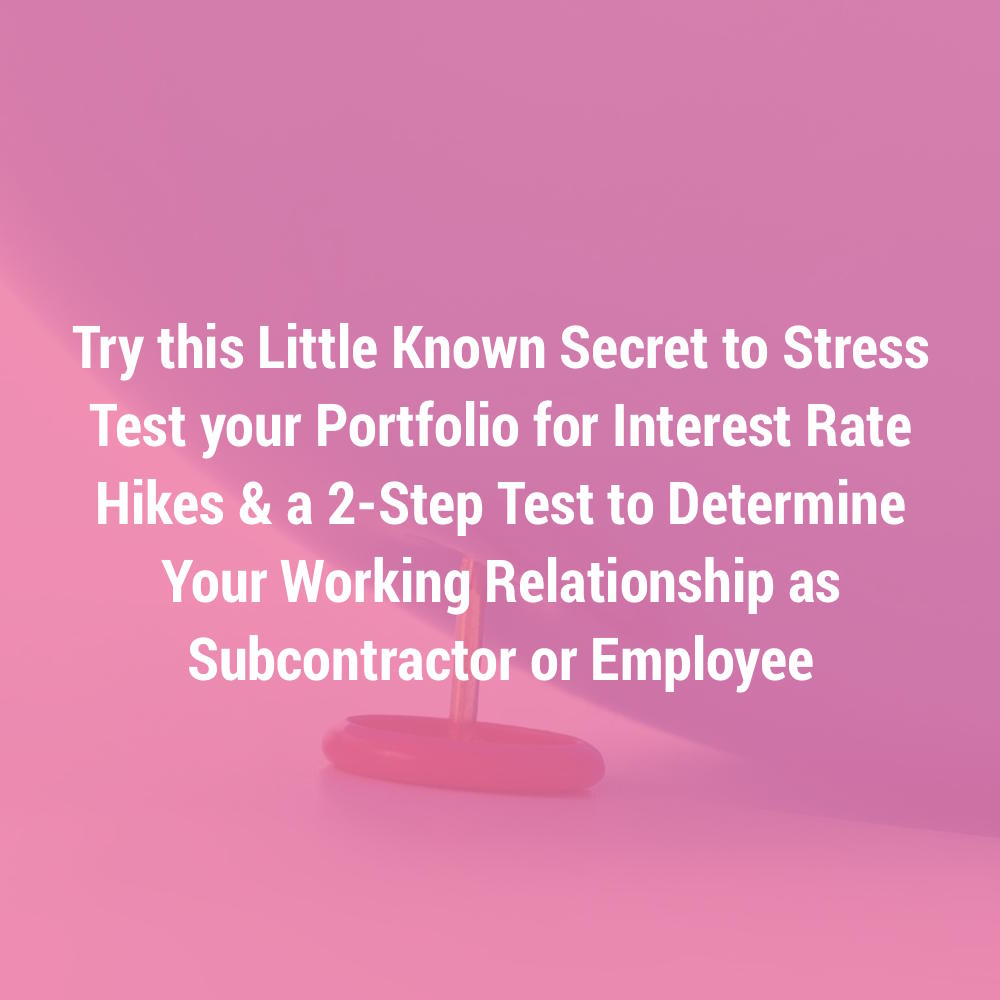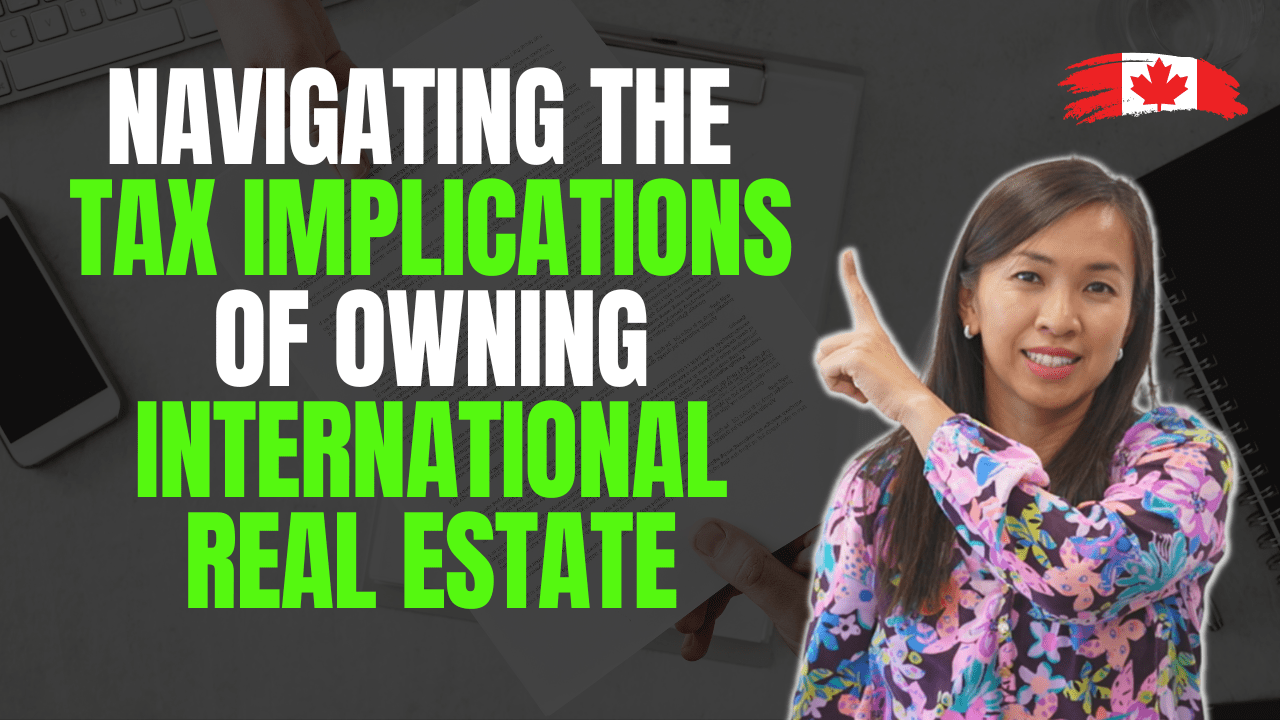We finally managed to purchase a new rental property and take advantage of the equity in our properties.
We signed the mortgage paper on our refinancing and new rental property purchase yesterday.
And then Bank of Canada finally announced a rate hike. ☹
Am I concerned?
I am still sticking with my own investing philosophy. I only purchase properties that can carry itself. If the property that we are buying cannot carry itself, chances are, they don’t belong in my portfolio.
So when an interest rate hike is announced, it doesn’t really affect my portfolio much. 😊
Indeed, we refinanced one of our properties recently and we opted to make a monthly payment as if we were committing for a fixed interest rate (that would yield a higher monthly mortgage payment), but we really signed the paper for variable mortgage interest rate. We are required to pay a lesser monthly mortgage but we choose to pay down our mortgage faster.
That’s my little secret to “stress test” my portfolio and prepare myself for any future rate hikes.
Of course, you can always opt for fixed interest rate. After all, only 30% of Canada’s mortgages are variable mortgages.
If you use my little secret in your portfolio, you can pay off your mortgage a lot faster. And most importantly, you don’t even need to worry much about a rate hike.
Now, onto this week’s topic.
Last week, we discussed the tax implication when looking at how the working status of subcontractor vs. employees is treated.
Canada Revenue Agency (CRA) uses a two-step process to evaluate the employment status.
Step 1
Some people prefer to be subcontractors, because they get to deduct more expenses than working as employees and hence lower their tax rates.
Some people prefer to be employees, because of the security and protection employment contracts offer. Employees get employment insurance when they are let go, they can get the company benefits including vacation pay, medical benefits, and other benefits as well.
There’s no right or wrong answer to which form of relationship is better.
It all goes back to both parties’ intention and how they define their relationship.
Sometimes the intent is clear and agreed by both parties. And it is documented in an agreement signed by both parties.
Sometimes the workers are eager to sign an agreement as subcontractors to enjoy the tax benefits, only to find out later that they are not eligible to claim employment insurance. There’s no common intent in the relationship, with or without a written agreement.
If you are hiring a subcontractor, make sure that he understands the implications of being a subcontractor, i.e. the pros and cons that we discussed in the previous blog post.
CRA reviews the contracts, conducts interviews for both parties and examines both sides’ actions to conduct their analysis.
Step 2
So what would CRA ask if you are going through such interviews?
Here is a list that they provided:
- The level of control the payer has over the worker’s activities
If the payer controls the daily activities, the worker has to ask for permission to work for someone else, the worker receives direction on how to complete the work and the payer has the final say on the decision-making process, chances are, this is more of an employer/employee relationship.Contrary to that, if the worker works independently, he can say no to the payer and he can work for someone else when he sees fit, then this is more of a subcontractor relationship.
- Whether the worker provides the tools and equipment
This is quite straight forward.When you engage someone to do the work for you, you provide all the necessary equipment, pay for all the costs to maintain it and retains the ownership of these equipment, chances are, it is more of an employer/employee relationship.
On the flip side, if the worker provides all the equipment and software, maintains it out of their own pocket, and they retain the ownership at the end of the relationship, it is a subcontractor relationship.
- Whether the worker can subcontract the work or hire assistants
As an employee, you are rarely allowed the flexibility of hiring an assistant. You’re required to do the work yourself.But as a subcontractor, you can subcontract out your work and hire assistants as you see fit. You conduct your own interviews and hire your own assistant.
- The degree of financial risk the worker takes
Employee usually takes on little to no financial risks. Almost all expenses incurred by the employee for the purpose of employment are reimbursed.A self employed individual, on the other hand, has ongoing operating expenses that he has to pay for. If he hires an assistant, he’s responsible to pay for the salaries of the assistant, whether new work is coming in or not.
- The degree of responsibility for investment and management the worker holds
This all comes down to the capital investment and business presence.If the worker has a large amount of capital investment (such as setting up a manufacturing plant, an office of his own or hiring multiple staff), and he also has his own business presence, he’s more likely to be considered a subcontractor.
- The worker’s opportunity for profit
As an employee, you are almost always guaranteed an amount of payout. Opportunity of losses is limited.A subcontractor, on the other hand, can lose money if he doesn’t make enough to cover the cost of rent, capital investments, staff salaries, etc.
Based on the review of all these 6 factors, together with the written agreement, if any, CRA then analyze the individual situation and decides the nature of the relationship.
Yes, you may hire someone as a subcontractor, sign an agreement and end up having to pay employment insurance because CRA may decide that you are an employer.
Yes, you may be hired as a subcontractor thinking that you can take advantage of all the deductions but the decision can be reversed by CRA and tax implication can be significant.
Be sure to consult a professional accountant before making such an arrangement.
Until next time, happy Canadian Real Estate Investing.
Cherry Chan, CPA, CA
Your Real Estate Accountant





